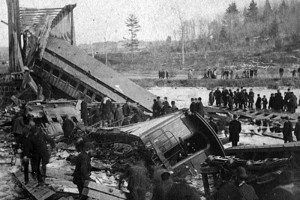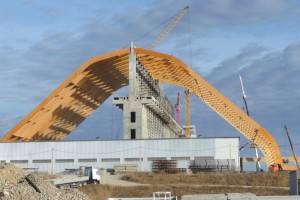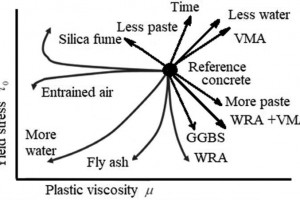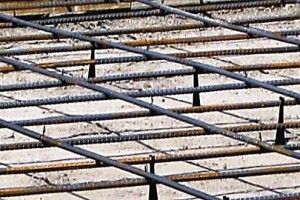Reliable connections in structural steel assemblies must accompany superior corrosion protection. Hot-dip galvanized (HDG) coatings produce maintenance-free corrosion protection for many years. The structural connections must provide equivalent corrosion protection as well as structural integrity to ensure maintenance-free performance. A solid structural connection is ensured by providing corrosion protection for the bolt and nut connection and providing clearance for the HDG coating special treatment of the nut. A critical factor in structural connections is the slip factor for the faying surfaces. This article discusses recent changes made by AASHTO to the design parameters for HDG faying surfaces and the increased clearance holes for connections using bolts with a diameter above 1 inch. …
Review Category : Articles
The Connecticut Western Railroad was chartered on June 25, 1868, to run from Hartford, Connecticut to the New York State line at Salisbury, where it was planned to connect with the Dutchess & Columbia Railroad in New York State near Millerton, NY. It would then connect to the New York & Harlem Extension railroad running northerly out of New York City towards Albany, NY. It was completed on December 21, 1871, with many of its bridges being wood and iron Howe Trusses, even though many railroads had adopted iron bridges by this date. Tariffville was a small town west of Hartford and located in a bend in the Farmington River that generally flowed eastward into the Connecticut River. …
The Key to Mass Timber Construction
Part 2: Introduction to Glued-in Rods
This is the second part of the series of articles on modern wood fasteners. Part 1 (STRUCTURE, August 2020) focussed on self-tapping screws (STS). Part 2 introduces the reader to glued-in rods (GIR) and the components making up these joints. Part 3 will summarize design guidelines for the GIR connections. Despite the interest among designers of mass timber construction, there is no official recognition in U.S. and Canadian design codes for GIR connections. This article sheds light on the state of the art of this emerging technology. We caution the reader that this an area of development without code approvals in the U.S. and Canada – the content is provided as informational and not to be used for design. …
In 2019, the American Society of Civil Engineers (ASCE) published the Civil Engineering Body of Knowledge (CEBOK, 3rd ed.), which “defines the set of knowledge, skills, and attitudes necessary for entry into the practice of civil engineering at the professional level.” ASCE acknowledges that the “fulfillment of the CEBOK must include both formal education and mentored experience.” Indeed, the CEBOK lists 21 desired outcomes, although 14 cannot be achieved without mentored experience after or separate from formal classroom experience. In 2019, ASCE also hosted the Education Summit: Mapping the Future of Civil Engineering Education. In the proceedings published in August 2020, the Summit listed four objectives of future engineering education; Objective 2 is to “Elevate professional skills to a truly equal footing with technical skills.” …
There is a skillset that makes your engineering career “recession-resistant.” That skillset is basic business development and has proven value to ALL structural engineering firms. Yet, many engineers actively avoid learning it for a variety of reasons. …
Structural engineering is a stressful profession, especially for young engineers. The construction industry is highly competitive regardless of your niche in it, and clients are always looking for designs to be maximally efficient and executed as quickly as possible. Unfortunately, projects run even faster today than they did a decade ago, leaving less time for young engineers to learn how to produce quality work quickly and communicate effectively with their clients. …
Seamlessly Blending Three Structural Materials
ICE Block I in Sacramento, California, is the reincarnation of the historic Crystal ice manufacturing facility, which was destroyed by fire on the same site. The new structure is an elegant blend of architecture and structure. …
Diversity, Equity, and Inclusion (DEI) have gained substantial exposure in 2020. Unfortunately, it has taken recent events of racism and abuse of power to bring it to the forefront. I hope the pain and loss associated with these events will not go to waste but will result in positive change. I do not consider myself an expert on DEI and even feel a bit exposed to critique by merely writing this editorial. Still, given my position in my firm and the profession, I feel it is my responsibility to talk about DEI and address it. I believe we all need to consider how we can positively impact DEI as individuals, as firm leaders within our firms, and through our professional organizations. …
Are We Testing for Flow Properties Correctly?
The rheological (flow) properties of concrete are essential for the construction industry, because concrete, for different elements of a structure, is placed into the formwork while it is in its plastic state. The flow properties affect not only proper concrete placement, consolidation, and finishing but also the hardened state properties such as strength and durability. Concrete that is not correctly placed and consolidated may have defects, such as voids and honeycombing, and be prone to aggregate segregation. Improper placement and consolidation may result in reduced compressive strength and increased permeability, reducing the concrete’s durability and sustainability. …
Understand the Consequences of Specifying Them to Resist Horizontal and Vertical Loading
Most structural engineers would not dream of deliberately violating any building-code provisions, but some are doing it on a regular basis – unwittingly. The problem area is concrete slabs cast on the ground. These concrete elements are frequently designed to serve as vertical supports for posts and columns, lateral ties, lateral-load transfer devices, and lateral bracing for walls. There is nothing wrong with relying on concrete slabs for these needs – as long as they are designed as structural slabs, like those in elevated floors, rather than common slabs on ground (SOG) that are relatively thin, reinforced with welded-wire fabric (WWF), if that, and contain control and isolation joints. It is this type of slab that is problematic for structural uses. …










